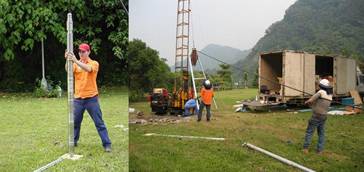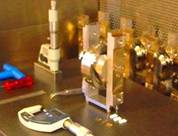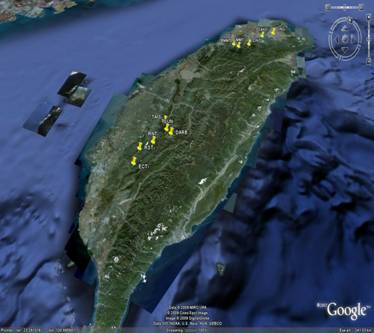|
GTSM Technologies |


|
Home |
|
GTSM History |
|
Tensor Strain in California for NEHRP |
|
Tensor Strain in Taiwan |
|
Tensor Strain for PBO / Unavco |
|
Tensor Strain in Japan |
|
Mining Applications |
|
Stability Research |
|
Frequently Asked Questions |
|
Advanced Frequently Asked Questions |
|
Publications |
|
Contacts |
|
Tensor Strain in TAIWAN
|
|
The Google Map shows the Tectonic setting for the GTSM sites in Western Taiwan installed in October, 2003 in the Tsengwen Reservior area. The Northern Taiwan sites installed in May, 2005 are located in the Hsinchu region and Central Taiwan instruments were deployed in March, 2006 in Nantou County. All sites are performing well and have already captured significant aseismic and seismic data on local and regional events.
The CGS initiative is an extremely important component of future earthquake research studies into regional tectonics and the predictability of major earthquakes and places Taiwan marginally ahead of a similar major USA research initiative (The Plate Boundary Observatory) by the National Science Foundation.
Follow these Links (left) to see detailed information about the installations in each region.
High Frequency Data The three prototype installations of GTSM borehole tensor strain systems in Taiwan are fully operational. These were prototype new generation instruments (the first produced since 1992) and have proved highly successful.
The data gathered to date are a valuable extension of the current seismic, GPS and hydrology observation networks in the region. They will provide, for long period data, a high-resolution complement for the GPS arrays already installed (Gladwin et al, 2000). The instruments measure strain with a dynamic range of at least 10-4, and are essentially flat to DC, so that they can directly provide displacement data not normally available for analysis. It is expected that these data will contribute to a better understanding of dynamic rupture effects, and earthquake source mechanisms in Taiwan. Data are not available from GTSM Technologies.
The program was enabled under the auspices of the Central Geological Survey of Taiwan. |









|
Three GTSM borehole tensor strain instruments were fabricated and deployed in south western Taiwan in 2003 as the initial components of a monitoring network for the Central Geological Survey. This initiative is part of its intensified earthquake-monitoring program following the Chi-Chi Earthquake. The instruments are intended to supplement the deformation observations from the GPS arrays as part of a systematic program of observation of plate boundary tectonics of the area.
The project also included extensive training of CGS staff for data retrieval and analysis, and training of deployment staff from Groundmat Constructions so that future deployments and all data analysis can be performed by Taiwan research interests. Deployment and logistical support by Groundmat has been world class, indicating the future and independent progress of this project will be possible without problems. |

